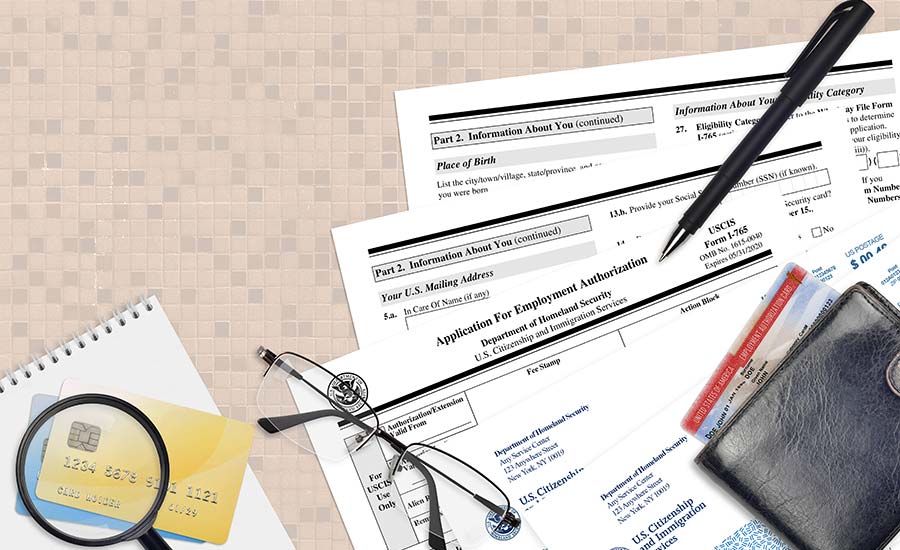

If you have stayed in the United States longer than you were authorized to stay, or if you have violated the terms of your visa, you are likely to have fallen out of status.
Being out of status can have serious consequences and can pose a threat to your employment, immigration benefits, ability to remain in the country and future travel to the US.
We’ll explain everything you need to know about falling out of status, including how to prevent it, the difference between out of status vs. unlawful presence and what to do if you are currently out of status.
Plus, we’ll explain how our immigration attorneys at Spar & Bernstein can help.
What Does It Mean To Be Out Of Status?
It means your official authorization to stay in the US, through a visa or a different document, has expired, or you have violated the terms of your visa.
Examples of falling out of status include:
- Overstaying a visa
- Entering the US with a student visa but failing to enroll in classes
- Falling below the required credit load while in the US with a student visa
- Entering the US with a fiancé visa but failing to get married within 90 days
- Working without proper authorization
- Being unemployed while having work authorization, status including H-1B or L-1
Once you have fallen out of status, your current visa may be void and you must leave the US
- If you are out of status, you are:
- Ineligible for a work permit
- Ineligible for immigration benefits
- Likely to be denied future visas to travel to the US
- Likely to be barred from reentering the US for a certain period of time
Out Of Status vs. Unlawful Presence & Unlawful Immigration
You are considered out of status if you have entered the US legally, but remained in the country illegally. This means you had a valid immigration status at one time, but it is no longer valid.
If you applied for an extension or a change of status before your approved length of stay expired, and it has expired while you are still waiting for a decision on your case, you are out of status but lawfully present in the US.
If you did not apply for an extension or change of status before the expiration of your approved length of stay, and it has expired, you are accruing unlawful presence. In this case, you are both out of status and unlawfully present, if still in the US.
If you entered the US illegally without being admitted or paroled, or if you used fake documents to enter the country, you are considered an unlawful immigrant. In this case, you never had lawful status and you were never lawfully present in the US.
How To Check If You Have Fallen Out Of Status Due To Visa Overstay
You may have fallen out of status if you have overstayed your visa, meaning you stayed in the US longer than you were allowed to.
How do you know when your approved length of stay in the US ends?
The end date of your approved length of stay in the US, known also as your departure date, is listed on your Form I-94, Arrival/Departure Record, which was issued by the US Department of Homeland Security (DHS) when you entered the US.
This date shows how long you can remain in the US after your arrival to the country.
Your departure date is not the same as the expiration date of your visa, which is stamped in your passport and shows how long you can use your visa.
If you don’t have your Form I-94, you can check your approved length of stay on the US Customs and Border Patrol (CBP) website using your passport number and personal information.
If you came to the US as a student, you are allowed to stay in the country until you complete your studies. In this case, instead of a date, your visa will say “D/S” which stands for “duration of status.”
Looking for an immigration lawyer?
Is It Possible To Renew, Extend or Change Your Immigration Status?
Depending on your visa category, you may be eligible to:
- Extend your stay as long as your visa is still valid
- Change your status — for example from an F-1 student visa to an H-1B worker visa, or from a tourist visa to a student visa
You may be eligible to change your nonimmigrant status, if you:
- Entered the US lawfully with a nonimmigrant visa
- Have a valid nonimmigrant status
- Have not violated the conditions of your status
- Have not committed crimes that could affect your eligibility to change status
If you are eligible to renew your status, apply before your approved length of stay expires to avoid the risk of falling out of status.
Once your approved departure date passes, you will typically not be allowed to file for a renewal or extension.
To extend or change your immigration status, file Form I-539, Application to Extend/Change Nonimmigrant Status.
Note that you shouldn’t change your activity in the US until USCIS approves your new immigration status.
For example, if you came to the US as a tourist and want to become a student, do not enroll in school before you receive your new status authorization.
Failure to maintain your current nonimmigrant status may result in deportation and a bar to reenter the US in the future.
To extend or change your immigration status, contact our knowledgeable immigration attorneys at Spar & Bernstein. We will research the details of your case and determine the best way to move forward.

What Can You Do If You’re Currently An Out Of Status Immigrant?
If you did not apply for an extension or change of status when needed and you are currently out of status, you are typically required to leave the US.
However, in limited situations, you may be allowed to remain in the US if you file an application for lawful permanent residence (a Green Card) through an adjustment of status.
To explore your options, contact our experienced immigration attorneys at Spar & Bernstein. We’ll review your case and do everything in our power to keep you united with your loved ones in the US
Who Is Eligible To Apply For Adjustment Of Status When Out Of Status?
If you have unlawful status, you may be eligible to adjust your status in certain situations. These include:
You Are Seeking Asylum
If you fear persecution in your home country based on your religion, race, nationality, political opinion or membership in a particular social group, you can apply for asylum.
You can apply for asylum regardless if you have entered the US legally or illegally. provided you:
- Are physically present in the US
- Apply for asylum within a year of your last entry (there are certain exceptions)
- Have been persecuted in your home country or fear persecution if you go back
- Have not been involved in activities posing a danger to US security, including serious crimes, participation in groups that have persecuted another person based on the grounds of religion, race, political opinion and more
To file for asylum, file Form I-589, Application for Asylum and for Withholding of Removal, and prepare the additional documents needed to support your application.
If you are granted asylum status, you can file a Green Card application one year later.
Looking for an immigration lawyer?
You Are Married To A US Citizen Or A Lawful Permanent Resident
If you are married to a US citizen or a lawful permanent resident, you can adjust your status even if you have unlawful status
To adjust your status, you must provide evidence that:
- Any and all of your previous marriages have been legally terminated by death or divorce
- Your marriage to a US citizen or a lawful permanent resident was entered in good faith with the intention to establish a life together
If you entered the US lawfully, having been inspected and admitted by an immigration officer, and are married to a US citizen, you can apply for a Green Card as an immediate relative, without the need to return to your home country.
If you have entered the US lawfully and are married to a lawful permanent resident, you can also file for a Green Card, but you must leave the US and go through the process through the US consulate in your home country.
If you have been out of status for longer than 180 days and have thus accrued unlawful presence, there is a high possibility that you will be barred from reentering the US for 3-10 years, depending on the length of your unlawful stay. In most cases, you may be eligible for a waiver of the unlawful presence.
To avoid being separated from your spouse for an extended period of time, apply for a provisional waiver before leaving the US.
The aim of the provisional waiver is to waive your re-entry bar, by proving that your spouse will suffer “extreme hardship” due to long separation.
To apply for a provisional waiver, use Form I-601A, Application for Provisional Unlawful Presence Waiver.

How Can An Immigration Lawyer Help If You Are Out Of Status?
Covering all areas of immigration law, from family immigration and employment immigration to asylum and refugee protection and DACA, our attorneys at the Law Offices of Spar & Bernstein have helped over 10,000 people obtain immigration benefits in the US.
If you currently have unlawful status and your future in the US seems uncertain, our team of experienced attorneys will:
- Look into the details of your individual case
- Determine your options
- Help you prepare and file the documents needed
- Represent you before the authorities
- Follow up on your change of status application
To learn more about how to handle the challenge of being out of status, watch the episode below from our Brad Show Live, hosted by our Managing Partner, Brad Bernstein.
Broadcast on YouTube and Facebook, Brad Show Live discusses news, civil rights, social justice and immigration and has over 170,000 subscribers and followers across channels.
Disclaimer: Attorney advertisement. prior successful results do not guarantee a similar outcome.





